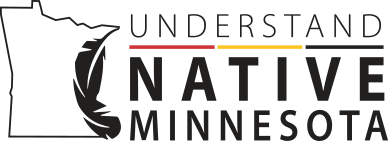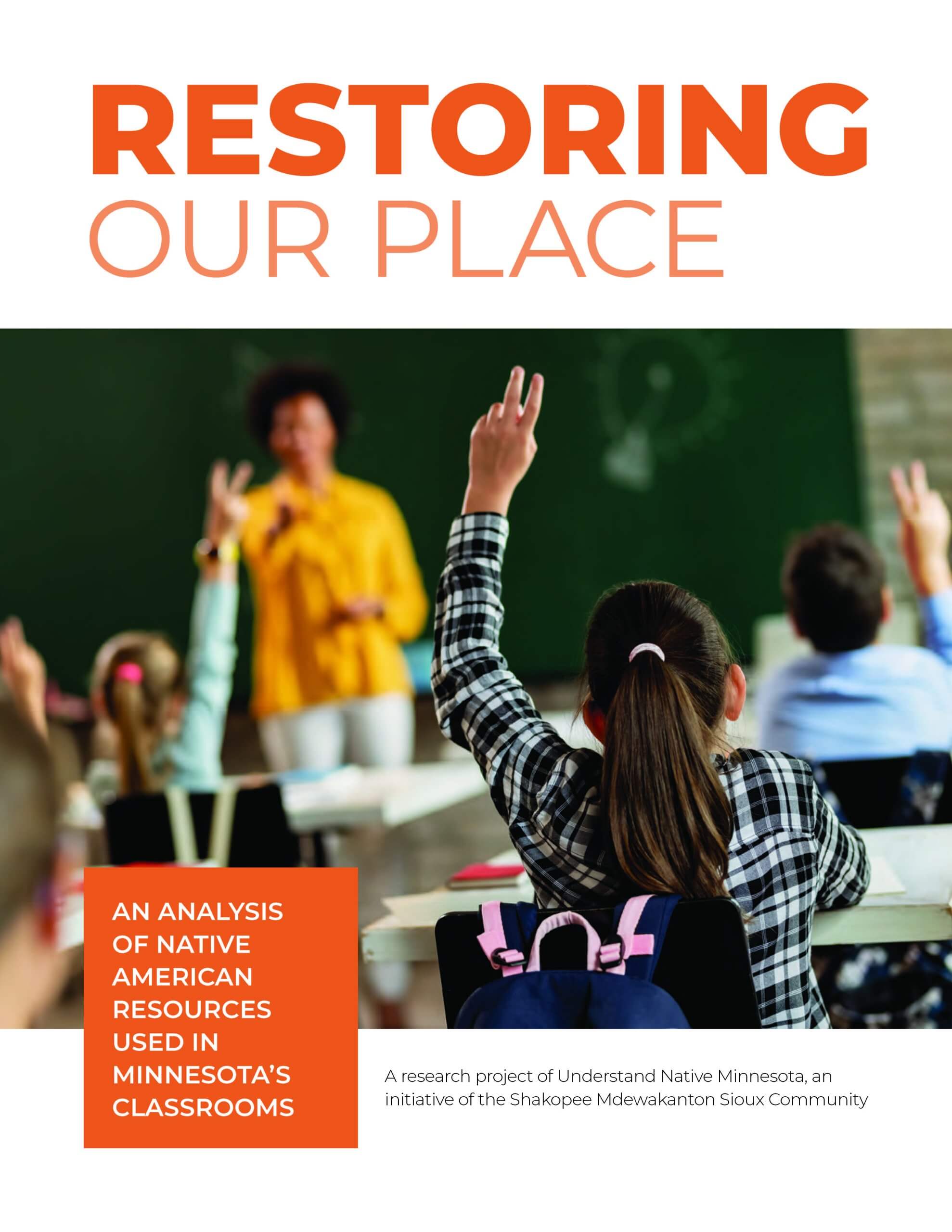Curriculum materials are of “highly variable quality,” availability is “hit-or-miss,” and educators want professional development help, according to first-of-its-kind resource scan report
Prior Lake, Minn. — A new, first-of-its-kind report was released today assessing what teaching resources on Native American subject matter are in actual use by Minnesota educators. The report, “Restoring Our Place: An analysis of Native American resources used in Minnesota’s classrooms,” examines what curricular resources and professional development programs are used in the state’s elementary and secondary schools, which ones should be shared more broadly, what gaps or inadequacies exist among those resources, and the most pressing needs for new resources.
The report was commissioned by the Shakopee Mdewakanton Sioux Community (SMSC) as a research project of Understand Native Minnesota, its philanthropic campaign to improve the narrative about Native Americans in Minnesota’s K-12 education system. This report is the first resource scan of its kind in the state and aims to serve as a reference point for future discussions about how Indigenous content can be accurately and appropriately taught in Minnesota. It is authored by Odia Wood-Krueger, a member of the Métis nation who has worked in Indian education for nearly 20 years.
“We embarked on this research project to ensure that our efforts and those of our strategic partners will prioritize the most important activities for thought leadership, collaboration and grantmaking to improve what is being taught about the Native American experience – past and present – in our schools,” said SMSC Secretary/Treasurer Rebecca Crooks-Stratton, the chair of Understand Native Minnesota. “We hope the findings and recommendations of this report will encourage our state and local policy makers, fellow tribal leaders, and education leaders to join us on the journey to improve future generations’ understanding of the Native experience and contributions to our state.”
The report includes the findings of an anonymous and voluntary survey asking educators about the type, availability and quality of resources utilized in each setting; local school leaders’ support; professional self-confidence in using those resources; and more. Participation was solicited from every school district and autonomous public charter and private school in the state. A total of 617 surveys were collected, representing teaching professionals in 235 public school districts, charter, and private schools, and 14 educationalorganizations. Submissions were received from respondents in 80 of Minnesota’s 87 counties.
Key conclusions of the report include:
- Most K-12 classroom teachers have very few reliable tools to help them teach Native content.
- The quality and availability of Native-related curriculum and instructional resources in Minnesota schools is hit-or-miss, and some truly bad material is still in use in some schools.
- Educators (teachers, administrators, specialists, and support staff) have been given little or no exposure in their initial training or ongoing professional development to help them judge where to find and how to use good-quality resources to ensure that students learn Native subject matter accurately.
- As state academic standards are revised to expand Indigenous content areas and school leaders feel a greater need to improve the teaching of the Native narrative, the need for accurate, comprehensive resources will become more acute.
“The findings of this report are sobering in many respects. Clearly, there is an enormous amount of work to be done to ensure that all the state’s teachers are equipped to accurately present Native American material,” said SMSC Chairman Keith Anderson. “But this report gives us great encouragement as well. The passion and commitment of educators across Minnesota to do well by Native topics is apparent from the survey.”
The “Restoring Our Place” report makes six strategic recommendations which should be considered to increase educators’ access to training and good materials to teach Native content:
- Involve tribal and Native expertise to change the dynamic of who creates Native-related content – from primarily non-Native to Native and Native-competent – and develop cultural standards and essential understandings in accordance with the state’s 11 sovereign tribal nations.
- Create an online repository of curated resources, to be developed and sustained outside of traditional institutions by a consortium of stakeholders.
- Develop standards-aligned teaching resources and make them accessible, with strong encouragement given for the creation of new curricula, textbooks, and online resources in collaboration with Native communities in the state.
- Design high-quality professional development programs to provide current and future teachers and administrators with specific training in the culturally appropriate instruction of Native content.
- Expand the ability for Native experts to share their knowledge in classroom settings with expanded opportunities for Native language and cultural experts outside of traditional licensure.
- Create an online Indigenous Education for All course for Minnesota adults and children for various grade levels so that parents can learn alongside and support their school-age children.
The full report is available at UnderstandNativeMN.org.
About the Shakopee Mdewakanton Sioux Community
The Shakopee Mdewakanton Sioux Community (SMSC) is a federally recognized, sovereign Dakota tribal government located southwest of Minneapolis/St. Paul. Following a Dakota tradition of generosity, the SMSC is one of the top philanthropists in Minnesota and is the largest contributor to other tribal governments and causes across the country. It is a strong community partner and a leader in protecting and restoring natural resources. The SMSC’s government, Gaming Enterprise, and various other enterprises are collectively the largest employer in Scott County and attract millions of visitors to the region.
About Understand Native Minnesota
Understand Native Minnesota is a philanthropic campaign launched by the Shakopee Mdewakanton Sioux Community (SMSC) in October 2019 to improve the Native American narrative in Minnesota’s K-12 public schools. The SMSC has committed $5 million for grantmaking to support research, teaching resources, professional development and educational programming. The campaign engages stakeholders and the interested public through convenings, listening sessions, a podcast, social media channels, and other activities. For more information, visit UnderstandNativeMN.org.
About Odia Wood-Krueger
Odia Wood-Krueger is the author and principal investigator of “Restoring Our Place: An analysis of Native American resources used in Minnesota’s classrooms.” She has worked in public education for the past 20 years focusing on culturally relevant content, curriculum writing, and community engagement. Prior to consulting full time with her own firm, Wood Krueger Initiatives, she spent nine years working for the Indian Education department at Minneapolis Public Schools. As a consultant, Wood-Krueger collaborates with various organizations in hopes of making education better for all students, especially Native ones. Some of her projects include the first-of-its-kind Native American Freedom Schools®, sensitivity writing for publishing houses, and community outreach for The Bias Inside Us, a travelling Smithsonian Institution exhibition focusing on implicit bias. Wood-Krueger is a member of the Central Urban Métis Federation, Inc. (CUMFI) and a dual Canadian-American citizen. She holds a bachelor of education degree from the University of Saskatchewan, a post-graduate certificate in environmental education, and a master of education degree from the University of Minnesota, Duluth, and recently started a master of Indigenous land-based education program at the University of Saskatchewan.
###


